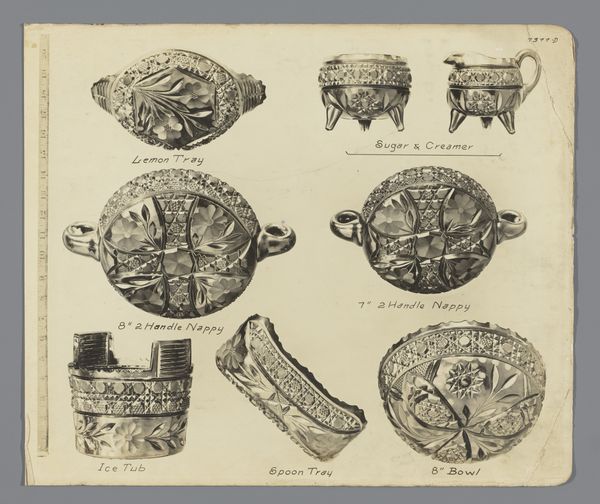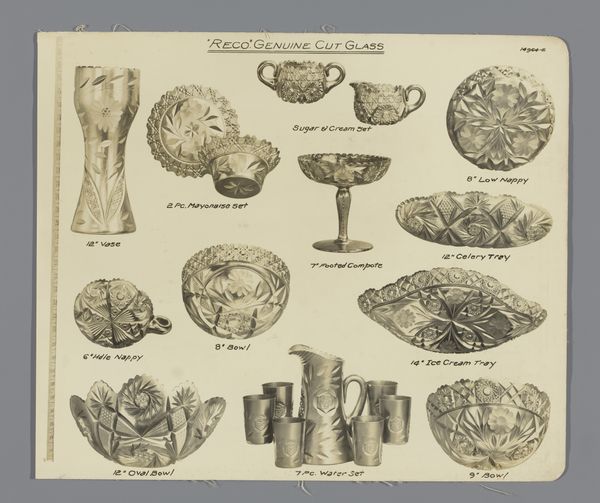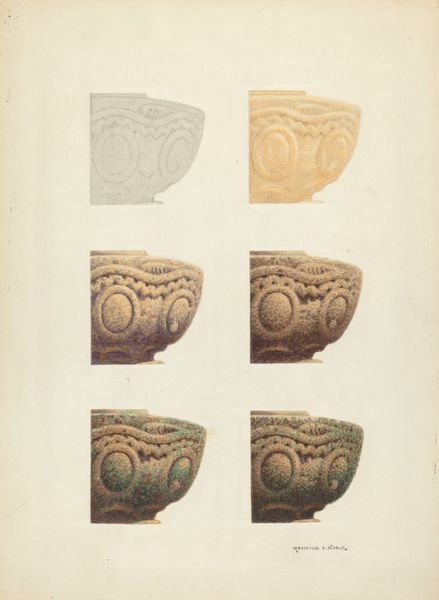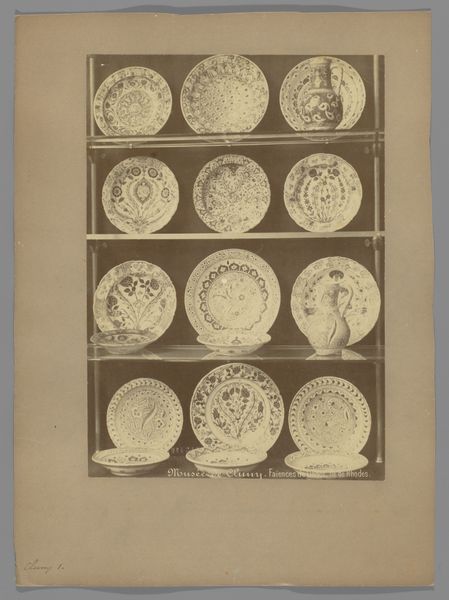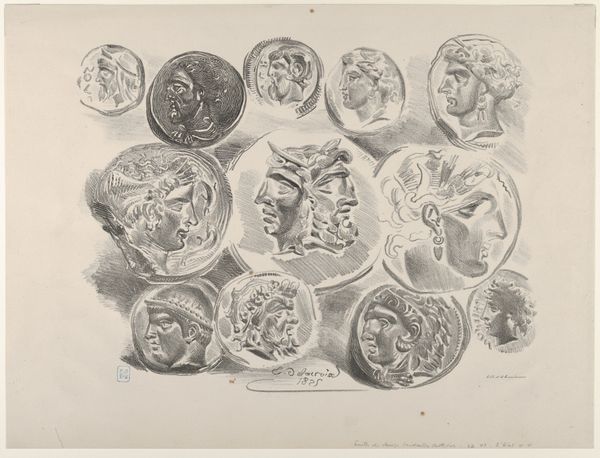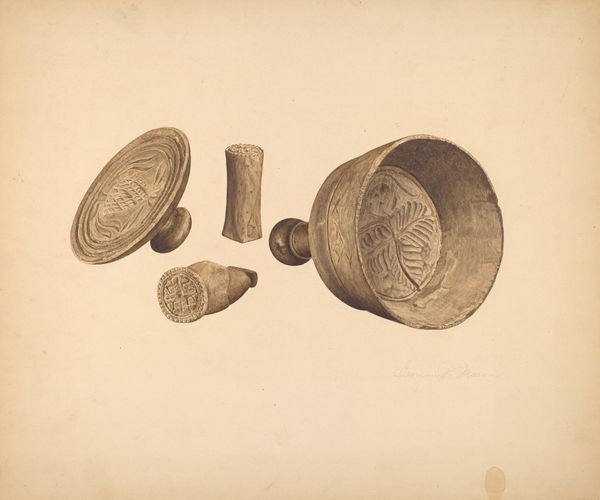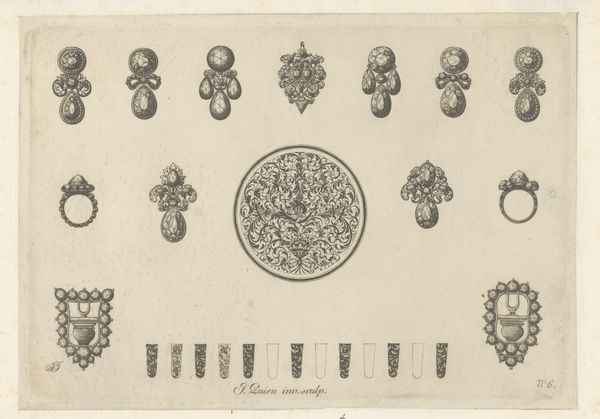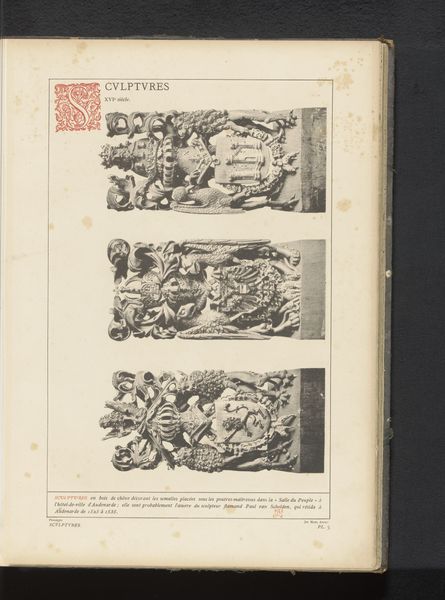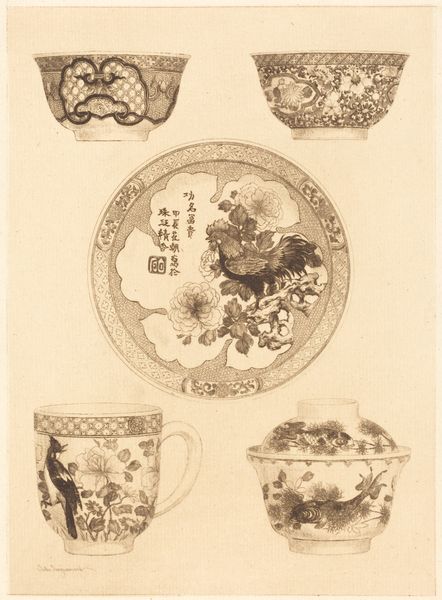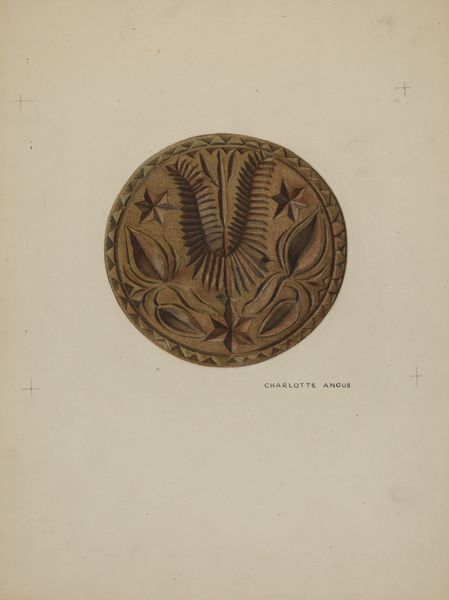
Reclamefoto met serviezen en keukengerei van de firma C. Read & Co., Baltimore, Maryland 1920 - 1930
0:00
0:00
print, photography, glass
#
still-life-photography
# print
#
photography
#
glass
#
decorative-art
#
realism
Dimensions: height 300 mm, width 240 mm
Copyright: Rijks Museum: Open Domain
Curator: This photograph, taken between 1920 and 1930 by the Stadler Photographing Company, is a promotional image for C. Read & Co. in Baltimore, Maryland. It showcases their cut glass serveware. Editor: It has a stark, almost clinical feel, doesn't it? Like an entomologist's display, but with fancy glassware. The rigid arrangement hints at a controlled domestic sphere, a curated vision of luxury. Curator: Precisely! The controlled composition highlights the commodification of domestic ideals during that era. Note how the photographic style echoes the meticulous detail of the cut glass itself. Mass production promised accessible luxury, impacting gender roles as women, now major consumers, navigated this new market. Editor: The abundance feels pointed, almost a little excessive considering the Depression was just around the corner. I can't help but think of Thorstein Veblen and his theories on conspicuous consumption and how this relates to the performance of social class in the early 20th Century. Did it democratize beauty, or simply stratify desire? Curator: It's a fascinating point. It aimed for democratization, yet these were aspirational goods. The photographic medium, itself evolving rapidly, played a key role in shaping desires. Marketing directly tied these objects to a vision of an ideal, modern home life. It really does place art objects and societal status firmly side by side in the popular conscious. Editor: Also the presentation style emphasizes, in effect aesthetic "perfection" achievable through consumer choices. Who gets to curate this perfect world, who is invited in, and, ultimately, who profits? Looking at the arrangement and thinking about who is actually present, it’s not everyone is it? Curator: No, not everyone. The promise of consumerism and these ideas are and always have been intrinsically interwoven with structures of power. Editor: It makes you think about the role photography played in solidifying that. Curator: Absolutely, this wasn't just advertising; it was crafting a lifestyle. It is a fascinating snapshot into a society caught between tradition and modernity, with glass as a powerful lens, figuratively and literally.
Comments
No comments
Be the first to comment and join the conversation on the ultimate creative platform.
